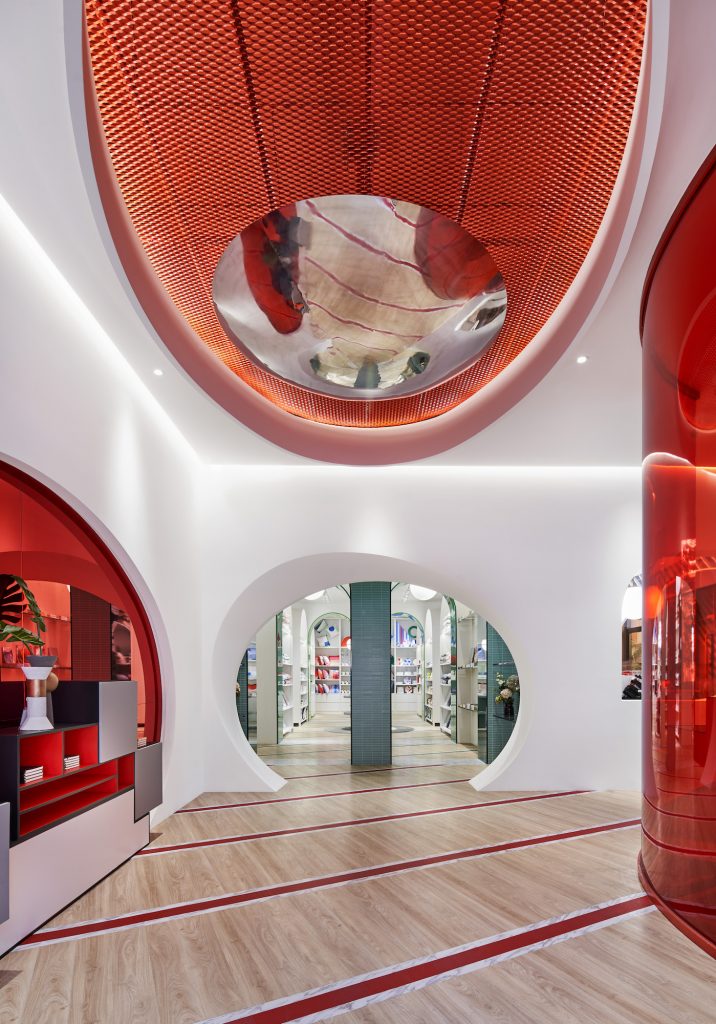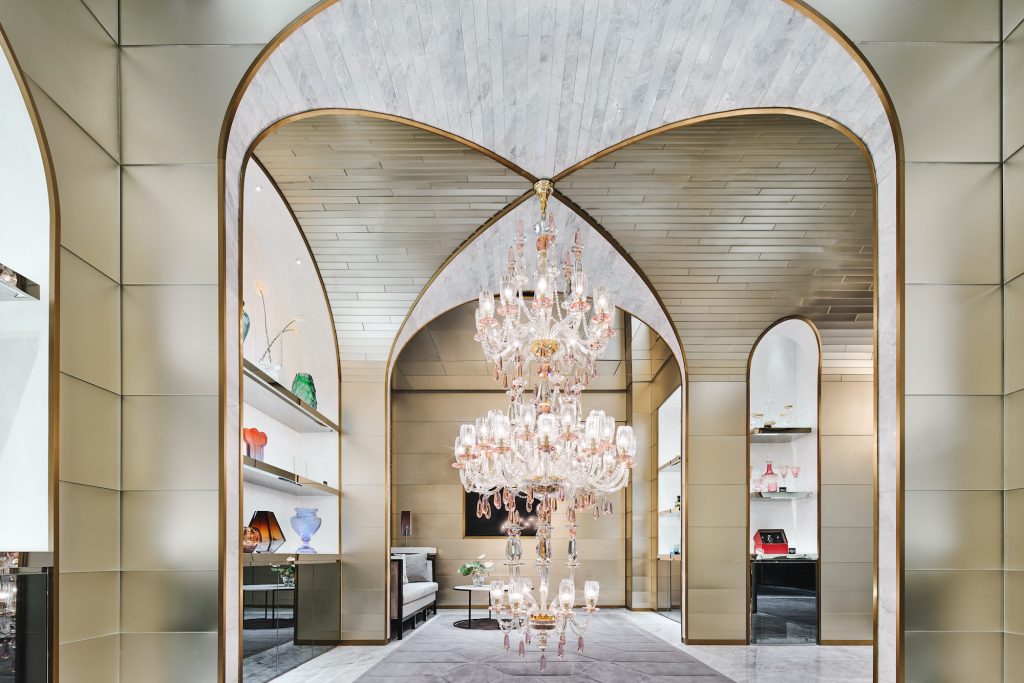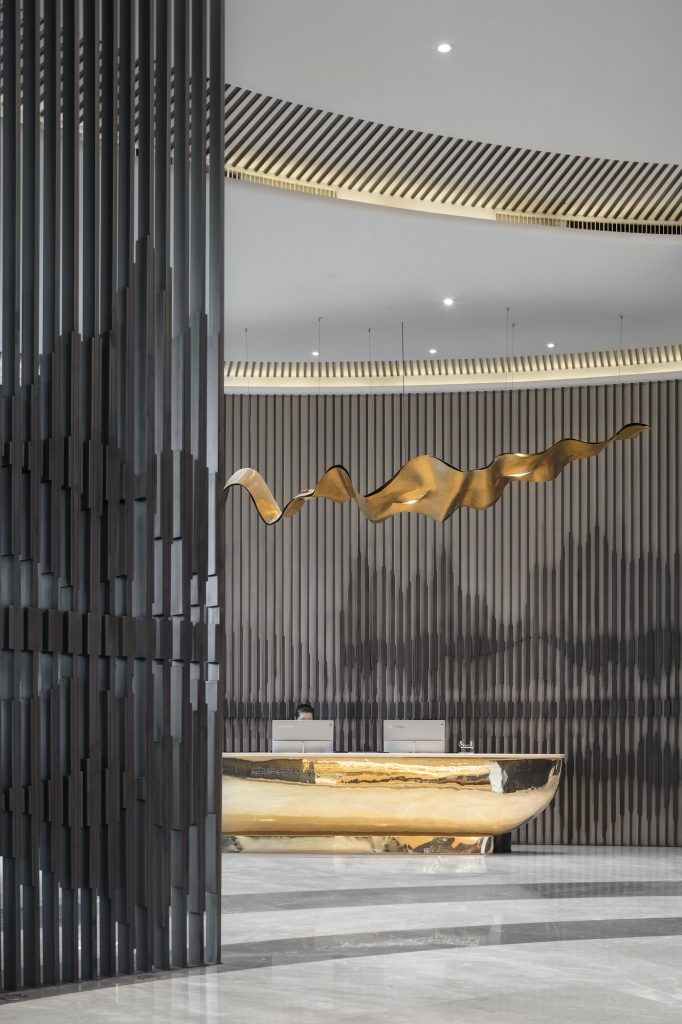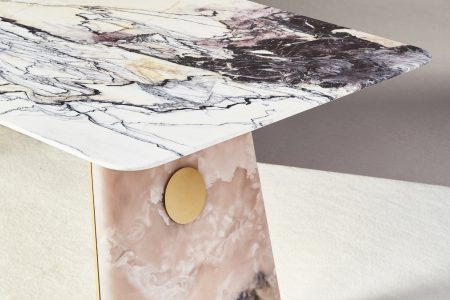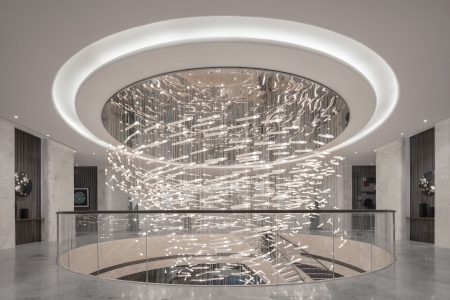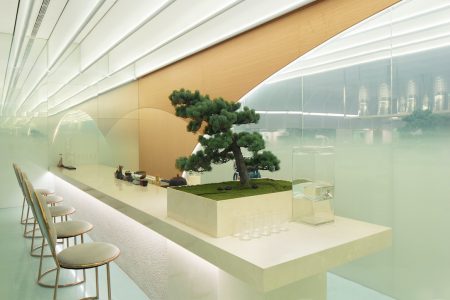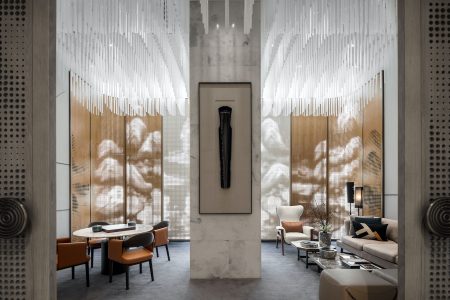Virginie Moriette & Ming Xu: Frontier Explorers
Since they set up their design studio in 2006, Virginie Moriette and Ming Xu have constantly been investigating and questioning boundaries – between their respective cultures and those of other continents, between architecture and design, between design and art.
Inspired by a combination of influences and references, Studio MVW’s Virginie Moriette and Ming Xu are carving out their own path, away from clichés and expectations, with a key underlining principle: turning every project into a new challenge.
TLmag: Could you tell us about the beginnings of Studio MVW? How did it all start?
Virginie Moriette (VM): When we arrived in Shanghai in 2006, we moved into an empty apartment and we started thinking about how we could furnish it, but all we could find were very ornate objects that did not match our taste. So we decided to try and create our own pieces of furniture – first for ourselves and then we started creating pieces for our friends as well. One thing led to another, we found a place, we created our firm and made more furniture items. Soon after, we won an ELLE Deco design award for one of the pieces, a bookshelf called Wen ST 02, and this is how clients started coming to us for architecture and interior design projects.
TLmag: The name of your design practice, Studio MVW, has a hidden meaning in Chinese. How does it translate in English and how does it define your approach?
VM: Until 2016 our firm was named Design MVW. We decided to call ourselves Studio MVW because it more accurately reflects the way we work. We like researching and experimenting and the term ‘Studio’, which better encapsulates these ideas in English, is closer to our approach.
Ming Xu (MX): In the West, a lot of professionals choose to name their company after themselves, whereas in China, people like company names that also convey meaning. Our firm’s Chinese name combines our first names: Ming, which means light, He, which means fusion, and Wen Ji – for Virginie – which respectively means culture and joy. In a way, Studio MVW, which is based on our own names, also expresses our values and the union of our two cultures. VM: And it also echoes several aspects of our work, and the names we choose for our furniture; for example, our lighting collection, Ming, our accessories, He (link), our bookshelves, Wen (culture), or our tables, Ji (joyful moments shared around a table). TLmag: Your work is influenced by a diversity of cultures and references. How would you describe your style? VM: It is true that we are inspired by many influences – by China first because it is the country where we live and work and because its culture is extremely rich – but we also get inspired when we travel across Asia or Africa or TLmag x Studio MVW Virginie Moriette & Ming Xu 5 other parts of the world. We do not want to limit ourselves. MX: One thing we want to avoid at all cost is chinoiserie. You will find very few typical shapes in our furniture because our goal is not to imitate classical Chinese styles. When we started our firm we tried doing this, but we stopped right away because it was just too easy and literal. Our objective is to communicate a Chinese feel but not through pre-existing shapes. We want to invent new forms to do that. We also want our work to be in line with China’s cultural and artistic evolutions which have been incredible in recent years. VM: We do not want to be categorized and be associated with a single style. What we like is precisely moving beyond clichés and creating objects that have a little more depth and density. Our designs combine Chinese influences, as Ming explained, as well as close attention to function, proportions and a taste for simple and refined work, which probably comes from the French culture we also share.
TLmag: Your work moves fluidly between different fields and on very different scales – from designing furniture for a gallery to working on architectural projects for the retail and hospitality industries. What is the common denominator in your projects?
VM: We really enjoy working on different scales and having to take that aspect into account when we work on ideas of integration and harmony. We enjoy moving from container to content and vice-versa. Before we started Studio MVW, we both worked as architects on very large projects including an airport and an opera house, and it was very interesting to go back to a smaller scale with our furniture because it was more tangible.
MX: Working on furniture also enables us to freely explore new aspects of design and this research and experimentation enriches our architectural work. Conversely, what we do for our clients sometimes also inspires us when we make furniture. VM: I think our fundamental objective is to create something unique for each project and each client. The common denominator of our work is the quest for exclusivity, which can translate into various expressions – like a new way to use a material or a new way to manage space, but always in a natural way – nothing should look contrived.
TLmag: Nature plays an important part in your work. How does it inspire you?
MX: To us, nature is like a universal language. Nature has no nationality, it is very diverse and unexpected, which is also something we try to emulate in our work. Our first lamp was inspired by a very old tree in our courtyard. As we were observing it, we came up with the idea of adding asymmetrical branches which morph into different shapes depending on where you stand, and which introduce a feeling of freedom rather than just being geometric shapes.
VM: The notion of integration is also important in our work. Nature is very diverse and yet always perfectly integrated. Nature’s intrinsic beauty has always been an essential source of inspiration.
TLmag: How does sustainability come into play in your design?
VM: Sustainability is not a central subject yet because China’s consumption society is still very recent. What we try to advocate through our work is durability. People always associate sustainability with eco-friendly or recyclable materials but there are other ways to be sustainable. In 2008, we tried to work with bamboo which proved very difficult and was just not the right solution. We have a different perspective on sustainability now. People buy and throw away things. We try to create beautiful, well thought out objects that people will want to keep.
MX: For us, having a sustainable approach implies being respectful: respectful of the objects you want to keep, respectful of space by creating well-built architectural projects and, of course, respectful of our clients.
TLmag: What kind of relationship do you have with clients during the course of a project?
VM: We like working in close collaboration and exchanging ideas with our clients; every project is driven by the objective of coming up with the right answer for it.
MX: And this is true both of the architectural projects and for the furniture we create. We want people who buy our objects to be able to use them as they wish and, to some extent, to participate in their creation.
VM: We do not like designs that are too rigid. We like modularity because it is a way to make objects more interesting and durable. You do not get bored with an object you can transform according to your needs and aspirations. Our XiangSheng Shelving Unit, for instance, is a module that can be used as a table, as a bookshelf or as a partition.
TLmag: You use materials like jade, marble, bronze or lacquer that are not only noble and beautiful but reflect your interest in preserving cultural traditions and showing an appreciation for the skills and craftsmanship required to use these materials in the best way. Who do you work with and how do you source these materials?
MX: We work with local artisans who use locally-sourced materials and our goal is to enhance them through our creations. We like to work in limited editions and design pieces that maximize the beauty of the material so that people can really appreciate the various textures of jade, bronze or marble. When we work with these materials, each step in the process is deliberate and precise. From the technical stage where we consider the shapes and forms that will best reveal the beauty in the materials and how to actually create them, to the artisanal stage, when they are transformed through craftsmanship and unique details and surfaces.
TLmag: How important is craft and the preservation of artisanal practices for Studio MVW?
VM: Some techniques have already disappeared and cannot be revived, but whenever it is possible, we love using traditional know-how, yes.
MX: We are currently working with artisans who make silk embroidery, a skill which was once frequently used but is now gradually disappearing. We are trying to reintroduce it into modern-day designs and to turn silk embroidery into more contemporary art.
TLmag: How has your work evolved since 2006?
VM: Today, we feel we can go further and we aim for a more daring, avant-garde approach. We like experimenting and we also like telling stories through our work. Hospitality is a sector we would love to develop because there are many new projects emerging and an increased need for beautiful stories.
TLmag: Has there been a project that posed a real challenge?
VM: I think the real challenge in China is time management. It is slightly less perceptible now but you have to build fast. We really see each project as a new adventure to embark on and so far, each project has been an inspiration for the next one.
TLmag: Is there a project you are particularly fond of?
VM: Of course, you always wish you had done better, but we know the amount of work that went into each piece of furniture and each architectural project and we are generally happy with the results.
MX: We do not want to cite a favourite project because we don’t want our other works to be jealous!
TLmag: What are your plans and goals for the future?
VM: We feel we are at a turning point. We have worked on very interesting and stimulating projects in the last ten years or so, but we want to go even further now and assert our identity as a studio through even more contemporary and experimental projects.
MX: We would like people to find new answers in our work – not just on the surface through the shapes we choose – but in the concepts, philosophies and heritage we try to build upon. We want to be increasingly free to explore, to be inspired and to inspire people.
VM: We always try to look for another answer. We always hope to go further in our research and to find an answer that truly matches both the client’s need and who we are.
This article is part of TLmag Special Edition: MVW Studio.
